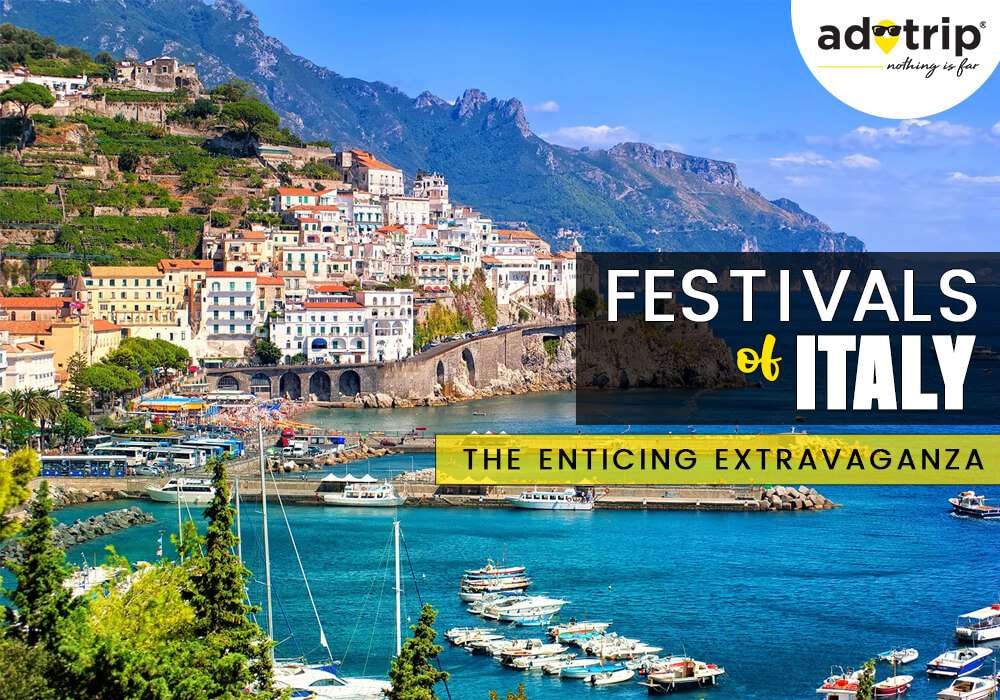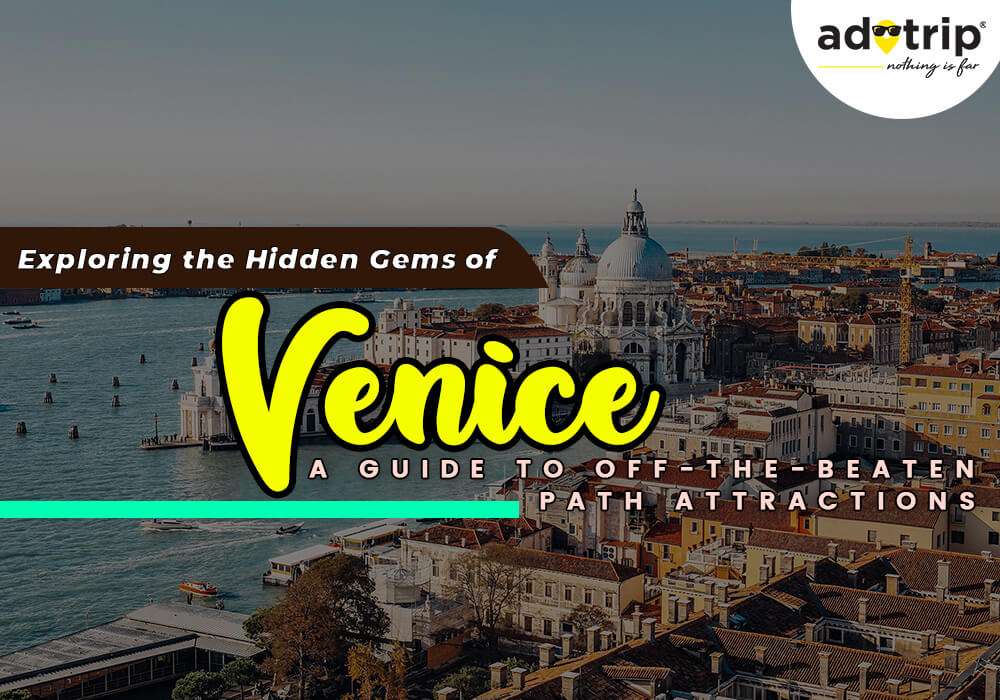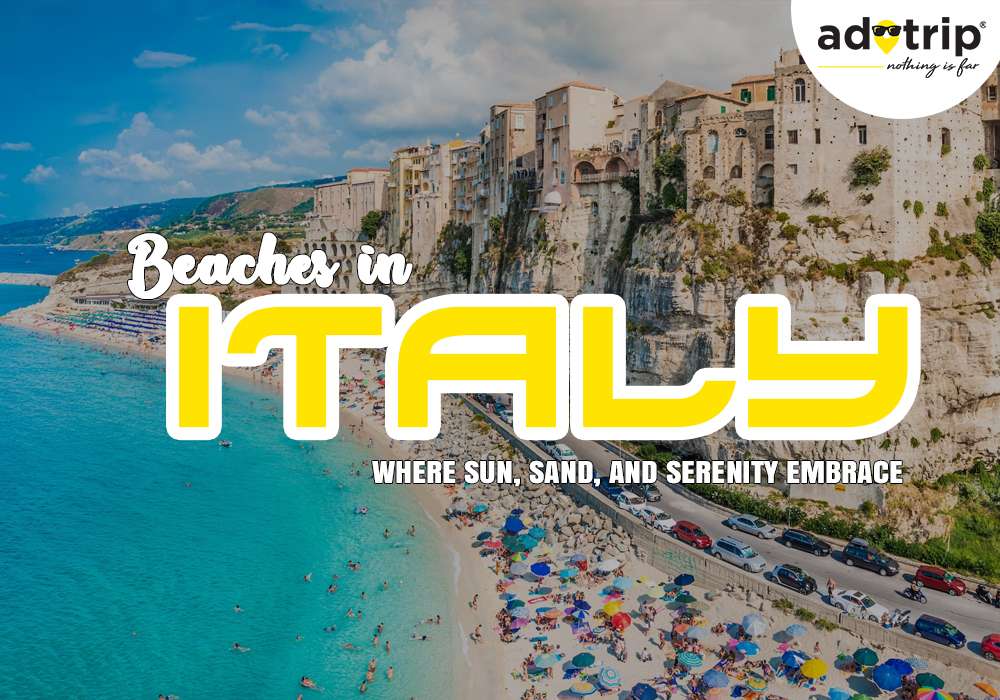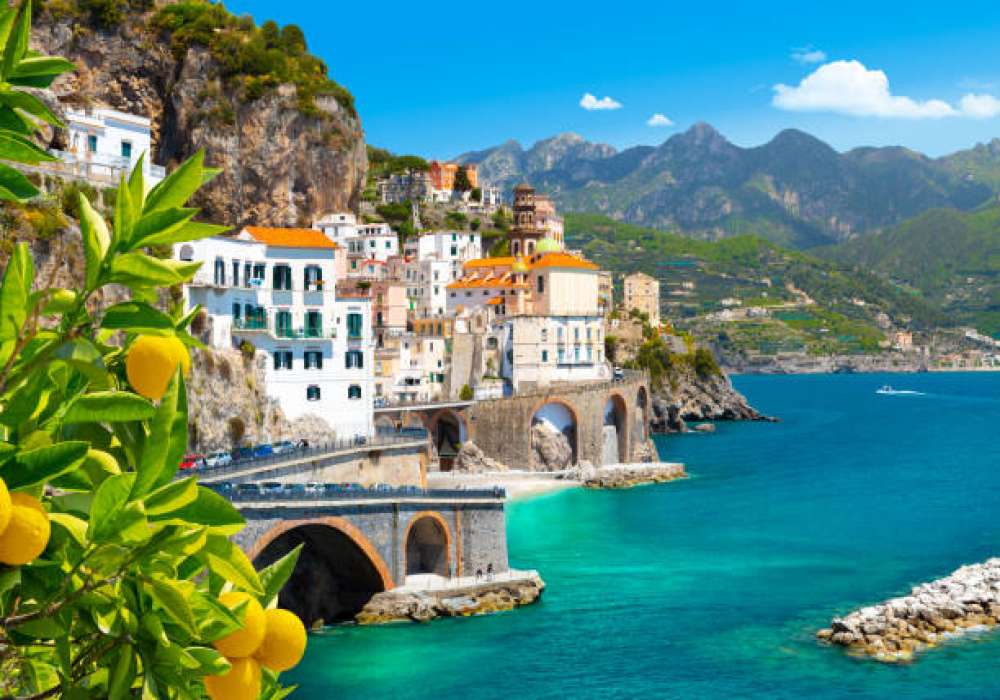
Last Updated At: 12-Dec-2023
14 Interesting Facts About Italy You Need To Know In 2024
Italy, a southern European country, attracts visitors with its diverse history, art, and culture. Italy is a peninsula shaped like a boot, endowed with magnificent coastlines, sprawling vineyards, and renowned buildings. It has made a lasting impression on the world. Each region of Italy has a tale waiting to be told, from the splendour of ancient Rome to the Renaissance brilliance of Florence. Italy is a shining example of the beauty of human ingenuity and tradition due to its delicious Italian cuisine, exciting Italian festivals, and passion that runs through its veins.
Find Out More About The Interesting Facts About Italy
One of the most popular travel destinations worldwide is Italy. Italy is a foodie paradise and the hub of fashion. Summer is here, so we assume you're already planning or at least thinking about your upcoming overseas trip. To make your decision easier, we've compiled a list of entertaining facts about Italy that will make your vacation even more enjoyable.
Read More: Famous Food Of Italy
1.Rome is an old city
Rome, a classic Italian city, has a long, legendary past that goes back thousands of years. The Colosseum, Roman Forum, and Pantheon are all famous for being the centre of the former Roman Empire. This historic city is a compelling location for tourists looking to discover the past while engaging in the present because of its distinctive fusion of modern life and ancient buildings.
2. The Trevi Fountain is filled with a lot of coins
The Trevi Fountain, a well-known icon in Italy, is well-known for its custom of coin-throwing into its glistening water. People worldwide throw coins into the fountain over their shoulders, hoping to return to Rome. The daily collection of the accumulating coins benefits numerous charitable initiatives. This method enhances the fountain's appeal and value as a landmark for culture and philanthropy.
3. Colours of the Italian Flag
The Italian flag, also called the "Tricolore," has three vertical bands that are each the same width. Green, white, and red are the hues from left to right. Green represents the beautiful Italian landscapes, white represents peace and harmony, and red denotes bravery and the nation's sacrifices. These colours have historical significance. The flag's design symbolises Italy's ideals, Italian cultural heritage, and pride.
4. Italy is the nation with the most world heritage sites
Italy has the most UNESCO World Heritage Sites, making it a magnificent country with an astounding cultural past. These locations, including ancient wonders like Pompeii and historic towns including Rome, Florence, and Venice, reflect its rich history and contributions to art, architecture, and civilisation. Italy has many World Heritage Sites, highlighting its significance for maintaining cultural heritage globally.
5. More than approx 20,000 people visit the Sistine Chapel every day
Every day, over 20,000 individuals enter Vatican City to view the Sistine Chapel's breathtaking artwork, attracting an incredible number of tourists. This masterpiece, covered with Michelangelo's famous frescoes, notably the ceiling's "Creation of Adam," continues to enthral art lovers, tourists, and spiritual pilgrims alike. Its popularity underlines the fact that it is an essential Italian cultural and artistic heritage.
6. There are two independent states
Within its borders, Italy is home to two separate states. The spiritual and governmental hub of the Roman Catholic Church is located in Vatican City, the smallest autonomous nation that is recognised by the international community. Another enclave, San Marino, is tucked away on Mount Titano's slopes and is among the world's oldest republics. These two distinct nations under the borders of Italy contribute to the country's rich geopolitical and landscape of culture.
7. Human Chess in Italy
An unusual tradition in Marostica, Italy, is brought to life every two years by a game of human chess played in the town's main square. On a vast board, participants act in mediaeval attire through the chess pieces' moves. This spellbinding performance, driven by a local legend, attracts tourists from all over the world and enchants the cultural tapestry of Italy.
8. The last king of Italy ruled for only 36 days
King Umberto II, who governed Italy's monarchy for 36 days in 1946, had a short but famous reign. His rise came after his father, King Victor Emmanuel III, abdicated. However, Italy decided to become a republic in June of that same year after a nationwide referendum, prompting Umberto II to leave office immediately. With this, Italy's monarchy ended, and the republican era began.
Read More : Places To Visit In Italy
9. An Italian newspaper published Pinocchio for the first time
Pinocchio was initially published in the children's newspaper "Giornale per i Bambini" in Italy. The serialised uses of the wooden puppet who longs to be a person were written by Carlo Collodi and appeared in this children's newspaper between 1881 and 1883. Because of the character's enduring charm and moral lessons, Readers of all ages are enthralled by the beloved Pinocchio.
10. The fifth-most popular destination in the world is Italy
With millions of tourists visiting each year, Italy is the fifth most popular destination in the world due to its renowned cities, breathtaking landscapes, and cultural riches. Italy provides various experiences, from the romantic charm of Venice's canals to the ancient grandeur of Rome and the artistic splendour of Florence. Its lasting appeal to tourists worldwide is attributed to its rich history, celebrated food, and top-notch art.
11. Italy is home to around 1500 lakes
With almost 1500 lakes dotting its terrain, Italy has an astounding assortment of natural beauty. From the calm serenity of Lake Como and Lake Garda to the breathtaking Alpine lakes like Lake Maggiore, these bodies of water vary in size and personality. These lakes add to the country's diversified and alluring landscape, providing leisure possibilities and magnificent views.
12. Every year, Italy consumes 14 billion espressos
Italy consumes an astounding 14 billion espressos yearly, which speaks much about the country's fondness for the beverage. Italians of all nationalities like this renowned method of brewing coffee, known for its rich flavour. The country is dotted with espresso bars, highlighting the beverage's significance as a social ritual and fundamental component of daily life.
13. Placing bread on the table with its top side up brings bad luck
It is considered unlucky in Italian tradition to place bread on the table with its top side up. This superstition has roots in earlier times when bread was a staple food, and was regarded as unkind to turn it upside down. Keep the top side up to show respect for the bread's nutritional properties and prevent attracting negative energies.
14. Italians consume salad as dessert
In Italy, salads are often consumed as desserts, displaying the country's distinctive culinary traditions. The "insalata di frutta" is a standard illustration, a refreshing fruit salad usually topped with honey or lemon juice. This technique reflects Italy's concentration on seasonal, local foods and the ability to appreciate understated flavours, even in sweets.
Travel to Italy with Adotrip for a stunning experience! Discover amazing locations, indulge in rich culture, and savour delectable cuisine. Allow Adotrip to help you as you efficiently and expertly explore top tourist attractions in Italy.
With us, nothing is far!
Read More: Famous Festival of Italy
Book Italy Tour Packages
Frequently Asked Questions About Facts About Italy
Q1. What is Italy's official name?
A1. The southern European nation of Italy, sometimes known as the "Italian Republic" (Repubblica Italiana in Italian), is renowned for its glorious past, vibrant present, and delectable food.
Q2. What is the capital and most populous city of Italy?
A2. Italy's capital city, Rome, is significant historically since it was the centre of the ancient Roman Empire. It serves as both the political and economic hub of the nation.
Q3. What form of government does Italy have?
A3. Italy's democratic republican form of government was created in 1948 by a constitution. It has judicial, legislative, and executive branches, a Head of State, and a President.
Q4. Who is the current President of Italy?
A4. President of Italy since 2015, Sergio Mattarella, is an Italian politician, judge, academic, and lawyer. Following his predecessor Giorgio Napolitano, he has served as president of Italy for the second-longest period.
Q5. What major religion do most Italian people follow?
A5. Roman Catholicism is the most common religion among most Christians in Italy. The Catholic Church has dramatically shaped Italy's history and traditions.
Q6. What is Italy's literacy rate?
A6. Italy's literacy rate has increased dramatically as more people receive higher-quality education. Between 2010 and 2021, 2021 witnessed the highest literacy rate, while 2010 saw the lowest. In 2021, the literacy rate was 99.94%. Italy saw a 0.1% increase in literacy between 2010 and 2021.
Q7. What is Italy's life expectancy at birth?
A7. Italy's projected life expectancy 2023 is 84.00 years, up 0.17% from 2022. Italy had a 2022 life expectancy of 83.86 years, up 0.17% from 2021. Italy's life expectancy in 2021 increased from 2020 by 0.17% to 83.71 years.
Q8. What is the national motto of Italy?
A8. L'Italia è una Repubblica democratica, fondata sul lavoro" (Italy is a democratic Republic, founded on labour) is the national anthem of Italy. This slogan conveys Italy's dedication to democratic ideals and the significance of persistence in its establishment.
Q9. How many UNESCO World Heritage sites does Italy have?
A9. Italy now has 58 UNESCO sites—53 cultural and 5 natural—and many more are being considered. UNESCO also acknowledges the intangible cultural heritage of Italy in addition to these 58 physical sites.
Q10. What is the national animal of Italy?
A10. The Apennine Mountains in northern Italy are home to the Grey Wolf, also known as Canis lupus italicus.
--- Published By Adotrip
Latest Blogs

Long Weekends In India 2025 - List of Holidays

Kazakhstan Travel Guide 2025: Affordable Luxury, Visa Free E...

Think Ayodhya is Just Temples? Discover Its Hidden Artistic...

Why Azerbaijan is the Best Budget Friendly Alternative to Sw...












.jpg)

 Dubai
Dubai Malaysia
Malaysia USA
USA





